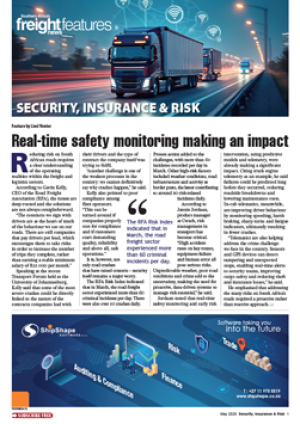With local prices doubling, shoppers are buying overseas rather than locally
IT HAS been a pretty tight year for the boutique industry involved in selling imported "exclusive, designer label" clothing to those interested in keeping up with the internationally fashion-conscious.
This is a result of an import tariff increase - declared as averaging between 15% and 40% - implemented at the beginning of last year. But, as FTW highlighted last year (February 14 issue), take into account the ad valorem/ weight structure of the duties, and some of the more exclusive-of-exclusives were being pushed-up in price by duty increases of more than 500%.
The effect of this would be a "crippling blow" to the SA retail industry of these high quality "designer label" clothes, according to one of our commentators of that time. And an example of just one of these uppercuts was the duty on a consignment of jerseys - a 573,2% duty increase, raising it from R313,73 in February 1996 to R2 112 in the same month last year.
And don't believe that someone who buys shirts at R1 000 a time is not as price conscious as the flea market buyer.
"Basically, it's what we predicted," said Nico Botha of the Bon Ami up-market clothing chain. "The duty increases pushed up the price of clothing on the shelf by around the 40% mark - and was met by immediate customer resistance.
"We (the retailers) have really suffered the last two seasons."
To picture this, Botha points his lens at Sandton City - a major nesting ground for up-market boutiques. "Almost all have been "on sale" since just before Christmas," he said. "Something which you never normally see until March at least."
Don't tell too many people, they don't like to have to do it, "but most of us have had to look for other less-costly suppliers as well, to be able to keep our prices competitive," Botha added.
But they still have to import "unique, exclusive" clothing, said Roland Raath, m.d. of Cargocare - a forwarding company specialising in the import of these clothes. And, although a "minute reduction" in the duty increases has helped to take some of the strain off the importers, they've only had one way out. "They can't really reduce the price of this type of clothing," said Raath. "Their only answer has been a run-down in the amounts they are bringing in.
"But when items which were in the R4 000-to-R5 000 range are suddenly getting near to the R10 000 level, then the buyers begin to shy away. For a lot of them, it's easier (and cheaper) just to go overseas to do their buying. That's not so good for the local suppliers."
They are all also a bit of an independent bunch. When FTW was covering the story last year, all sorts of "big boys" in the trade were suggesting a concerted campaign - putting all their muscle together to push for a cut-back in tariff increases. Increases which most of them felt served no practical purpose. Fitting-in to the overall WTO (World Trade Organisation) import tariff levels, and acting as a support for embattled local producers being hurt by the price of imports, didn't hold water. WTO recommended levels were not aimed at these top-end of the market clothes. And no local manufacturer was really competing at that level - apart from "maybe a 5%" share of of their top-of-the-range material where imports did a cross-over.
But, apart from a reported lunch with Minister of Trade and Industry (T&I) Alec Erwin by a senior member of the industry (one that was a normal part of the acquaintanceship anyway), nothing came of the head-to-head notion. The individual letters of complaint and appeal were met with little more than "regrets" from the Board of T&I, and the increases remained almost completely in place.
"We've still no industry body in place to deal with this sort of issue," said Botha. "All we can do now is put up with it as best we can.
